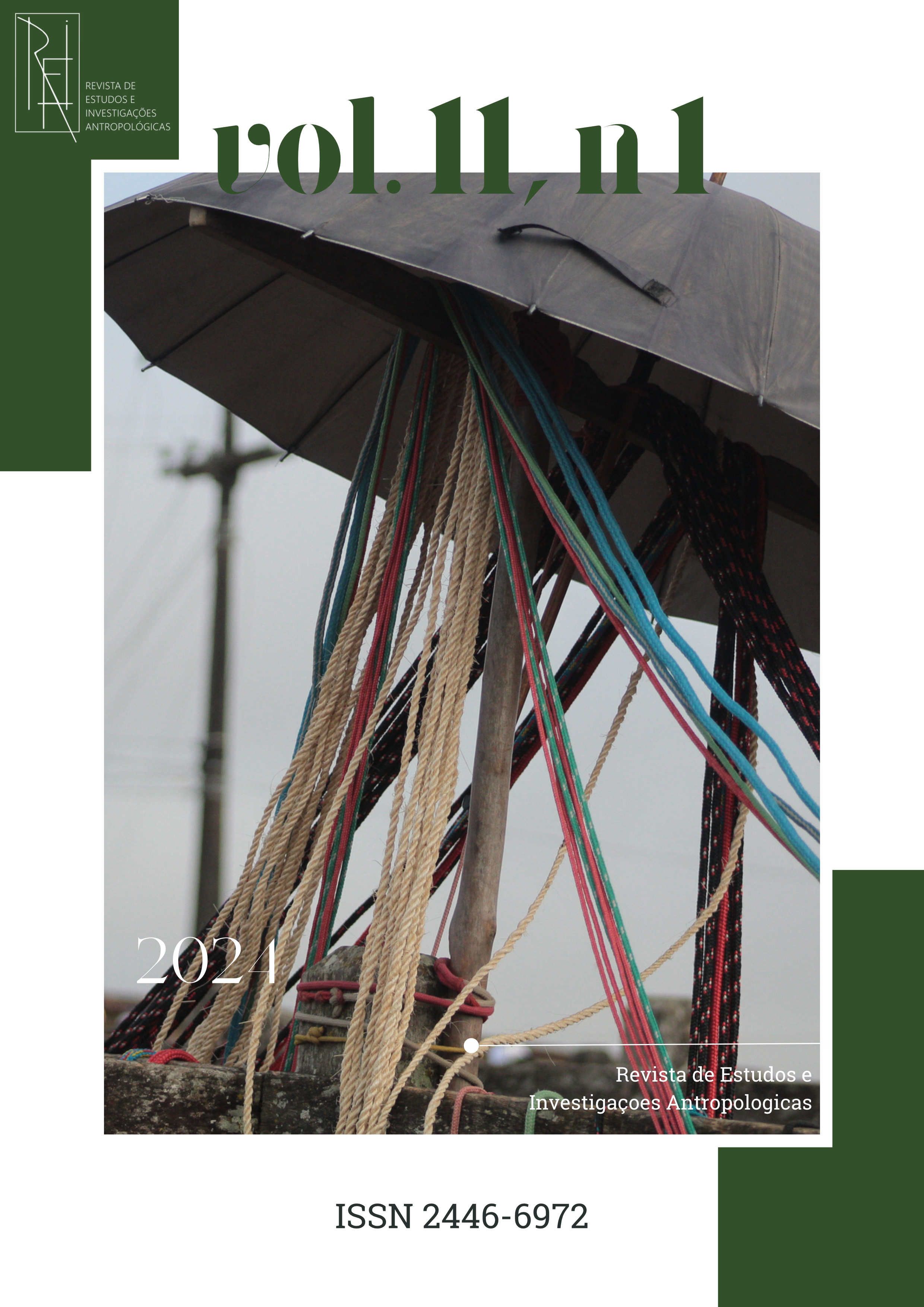Blood between life projects
a trajectory with Mayer-Rokitansky-Küster-Hauser (MRKH) syndrome
Keywords:
blood , infertility , sexual health , Rokitansky syndromeAbstract
In this article, I will present the therapeutic itineraries and life trajectory of a woman with Mayer-Rokitansky-Kuster-Hauser (MKRH) syndrome, highlighting the centrality of bleeding in her life. The absence of menstruation is seen as a disruptive milestone in a diagnosis of a reproductive condition, making it possible to analyse this phenomenon as something that is attributed to normality in bodies that are read as female, as well as the possibility of creating life projects that are expected of women, linked to motherhood. However, in this case we will also see how the syndrome brings about another type of bleeding, linked to dilation of the vaginal canal, and how blood is signified and experienced in relation to other bodies and subjects, and how it becomes liable to mould subjectivities. The material on which these analyses are based comes from a semi structured interview conducted with this woman, which is part of my ongoing master's research, and allows me to reflect on the connections between health processes, biomedical practices and discourses, and notions of gender and normality.
References
BELAUNDE, Luisa Elvira. 2006. A força do pensamento, o fedor do sangue. Hematologia e gênero na Amazônia. Revista de Antropologia, ano 49.
BUTLER, Judith. 2014. Problemas de gênero: feminismo e subversão da identidade. Rio de Janeiro: Civilização Brasileira.
CARSTEN, Janet. 2011. Substance and relationally: blood in contexts. Annual Review of Anthropology, v. 40:19–35.
HÉRITIER, Françoise. 1996. Masculino/feminino: O Pensamento da Diferença. Lisboa: Instituto Piaget.
JOHNSTON-ROBLEDO, I.; CHRISLER, J. C. 2020. The menstrual mark: menstruation as social stigma. In BOBEL, C. et al. (eds.): The Palgrave Handbook of Critical Menstruation Studies. Palgrave Macmillan.
MARTIN, Emily. 2006. A Mulher no Corpo: Uma análise cultural da reprodução. Rio de Janeiro: Garamond.
MEDIÅ, L. M.; SIGURDARDOTTIR, S.; FAUSKE, L.; WAEHRE, A. 2023. Understanding sexual health concerns among adolescents and young adults with differences of sex development: a qualitative study. International Journal of Qualitative Studies on Health and Well-being, v. 18, n. 1. (https://doi.org/10.1080/17482631.2023.2204635)
MENDES, Luna. 2020. Relações e substâncias: apontamentos sobre corporalidade e concepção Mbya-Guarani. Aceno – Revista de Antropologia do Centro-Oeste, v. 7, n. 14:119-136.
PAEZ-LOPEZ, Guillermo et al. 2013. Manejo laparoscópico de miomatosis uterina en pacientes con Síndrome de Rokitansky: Reporte de un caso y revisión de la literatura. Rev Colomb Obstet Ginecol, v. 64, n. 4:469-474. (http://www.scielo.org.co/scielo.php?script=sci_arttext&pid=S0034-74342013000400007&lng=en&nrm=iso; acesso em 13/10/2023)
RABELO, Miriam Cristina. 1994. Experiência de doença e narrativa. Rio de Janeiro: Editora Fiocruz. pp. 11-20.
ROBERTS, Tomi-Ann. 2020. Introduction: Menstruation as embodied. In BOBEL, C. et al. (eds.): The Palgrave Handbook of Critical Menstruation Studies, pp. xx-xx. Palgrave Macmillan.
SAHLINS, Marshall. 2011. What kinship is (part one). Journal of the Royal Anthropological Institute (N.S.), v. 17:2-19.
SAHLINS. 2011. What kinship is (part two). Journal of the Royal Anthropological Institute (N.S.), v. 17:227-242.
SABIDO RAMOS, Olga. 2021. The social form of secret: Gendered bodies, senses and menstruation. Digithum, n. 28:1-11.
SANTOS, Caynnã de Camargo. 2023. Doing infertility. Matter: Journal of New Materialist Research, v. 8:1-21.
WAGNER, A.; BRUCKER, S. Y.; UEDING, E. et al. 2016. Treatment management during the adolescent transition period of girls and young women with Mayer-Rokitansky-Küster-Hauser syndrome (MRKHS): a systematic literature review. Orphanet Journal of Rare Diseases, v. 11:152.
Downloads
Published
Issue
Section
License
Copyright (c) 2025 Clarissa Cavalcanti

This work is licensed under a Creative Commons Attribution-NonCommercial-NoDerivatives 4.0 International License.
Direitos Autorais para textos publicados na Revista de Estudos e Investigações Antropológicas são do autor, com direitos de primeira publicação para a revista. No caso de submissão paralela a outro periódico, o texto em questão será excluído imediatamente do processo de avaliação e não será publicado na Revista de Estudos e Investigações Antropológicas.


